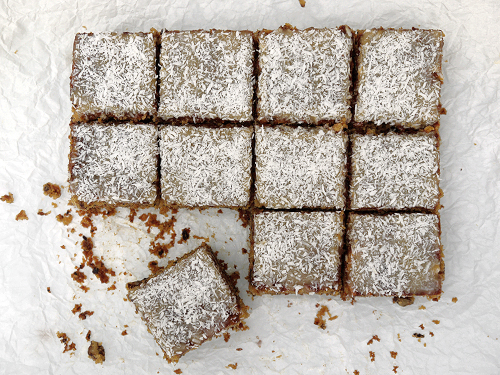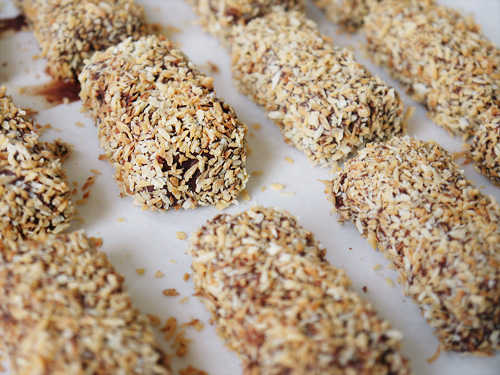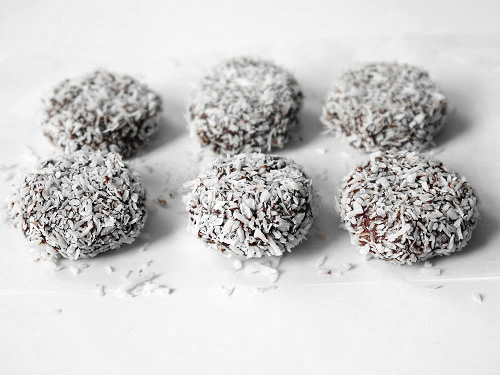I’ve had alfajores on my list of things to make for a while, and I’ve finally had a go at the famous little Argentinean shortbread cookies filled with dulce de leche caramel. And as is the way of the world, I waited a very long time to try them, then ended up making them a couple of times this year. Turns out they’re pretty popular and go fast.

The first time was back in May in the middle of Lockdown 1 (remember that? And now we’re on Lockdown 3 here in London…possibly until February 2021…). There was a palpable frisson of excitement among European royalty watchers when Queen Maxima of the Netherlands whipped up a batch for her 49th birthday made to her Argentinean mother’s recipe. She explained they are her favourite cookies, and posted pictures of herself in the kitchen standing around in a gold ball gown.
I had a go at Queen Maxima’s recipe, sadly not dressed in formal wear, was going to post them as part of my lockdown baking series. I just never quite got round to it, but they were delicious, and they disappeared pretty quickly. But it did convince me that it was high time for alfajores to appear on my festive baking list.

In preparing for the festive version, I did a little reflecting on what I would like from an alfajor.
I am sure that South Americans have very clear views about what they should be like, but there does seem to be a bit of variety among the various recipes I looked at. Lots of recipes use a lot of cornflour to make them crumbly. This makes sense, and I agree to a point, but if the dough has too much cornflour, I find that it becomes too crumbly when you eat them. Instead I prefer to have a cookie that is slightly crisp and only breaks when I bite into it, as opposed to one that collapses. So my recipe has just a bit of cornflour, which I think gives a nicer texture and makes the dough easier to work with too. I’ve also omitted any eggs or egg yolks. I wanted the cookies to both crumbly but also a bit crisp to contrast with the smooth caramel filling.
I’ve also skipped the addition of lemon zest – I’ve tried alfajores both with and without the lemon, and while I can see that it lifts the flavour a little and cuts through the sweetness as well as being traditional, I just prefer it without. It must be my Scottish sweet tooth. If I’m going to have caramel, I want it to be pure, unadulterated sweetness. To provide the balance to the caramel, I’ve added a generous pinch of salt to the dough instead. I’ve also baked them so they have a slight colour to them. Lots of recipes keep them almost pure white, but I just prefer them to be slightly more baked.
The filling is the famous dulce de leche. You can be efficient and just buy a tin of the stuff. But if you are feeling adventurous, you can make it yourself. When I was a kid, we did this by piercing the top of the tin to release pressure, and we would then let the tin sit in a pan of simmering water for an hour until it had turned into caramel, ready to be added to a banoffee pie. What actually happened was that some water got into the tin, and that wasn’t great if you wanted it to have a nice thick texture. Maybe tin cans have gotten stronger since the 80s, but I recently came across another way – you put a whole tin in water, unopened, and simmer the thing for a few hours. Then leave it to cool, and when you open it the next day, the whole lot has magically turned into thick, luscious dulce de leche. It’s simple, effective, and you get the thrill of living dangerously in case the can does actually explode and coat your kitchen in caramel. But hey, we’re still in various states of lockdown, and cleaning anything sugary from your whole kitchen would give you something to do for at least several hours!
I tried a couple of different techniques in making the cookies, and my clear preference is for the biscuits to be on the thinner side. You’re going to be sandwiching two of them together with a lot of filling, so they need to be thin for two reasons. First, if they’re too thick, the cookies will be too tall. And second, you want to get a good cookie-to-caramel ratio. No-one wants your cookie with too little filling. Mine were 4mm thick, which I achieved by finding two magazines of the requisite thickness, then laying them either side of the dough, and voila – they act as rolling guides when you’re too cheap to buy the real thing. The other thing to embrace is rolling this dough out between two sheets of greaseproof paper. The dough is sufficiently buttery that it will not stick, and since you are not using flour, it means the first cookie will be the same as the last, as you’re not adding more flour as you shape the dough and re-roll the scraps.

If you’re locked down and don’t think you can eat them all over the course of two days, then I would fill them in batches. The cookies will keep well in an airtight tin, and then you can just fill and serve them when you need them. If you leave them to sit, then cookies start to go soft after a couple of days, and while they still taste amazing, you start to lose the textural contrast.

Putting the risky business of the caramel to one side, this is a nice recipe to try with children. The dough is quite forgiving, and you don’t need to worry about cutting out any elaborate shapes. They also love the sandwiching together of the cookies, and trying this out at the weekend I found that there was a material “angel’s share” which was being sneakily scooped from the bowl and not being added to the cookies when a certain little someone thought I was not looking.
To make Alfajores (makes around 30)
For the dulce de leche filling
• 1 tin condensed milk
For the dough
• 175g butter, softened
• 80g icing sugar
• pinch of salt
• 1/4 teaspoon vanilla extract
• 4 teaspoons rum
• 200g plain flour
• 50g cornflour
• 1/2 teaspoon baking powder
To finish
• unsweetened desiccated coconut
1. Make the caramel – fill a saucepan with cold water. Put in the tin of condensed milk on its side – there should be a good 3-4cm of water above the tin. Bring the pan to the boil, then turn down the heat, cover the pan, and leave on a simmer for 3 hours. Check it regularly to make sure that the can stays completely immersed – add more water as needed. Turn off the heat, and leave to cool. Do not open the tin while warm – it can explode and cover you in burning caramel!
2. Make the dough. Beat the butter until soft. Add the icing sugar, salt, vanilla and run, and beat until pale, fluffy and completely combined. Add the flour, cornflour and baking powder, and mix everything until you have a smooth dough. Wrap in cling film and chill in the fridge for 30 minutes.
3. Preheat the oven to 175°C (350°C). Line a baking tray with greaseproof paper.
4. Roll out the dough to 4-5mm thick. Cut out circles of 4-5cm, and place on the baking sheet. Before baking, place the whole sheet of cut cookies in the freezer for 2 minutes. Then bake the cookies until they are starting to turn golden at the edges (around 8-10 minutes). Turn the tray half-way to get an even colour. Repeat until all the dough has been used. Leave the cookies to cool completely.
4. Time to assemble. Open the cooled tin of condensed milk, and it will magically have transformed into deep golden dulce de leche. Give it a good mix, then take a cookie and add a generous amount of filling. Place another cookie on top, press gently until the filling is just sticking out of the sides. Roll the edge in desiccated coconut.































